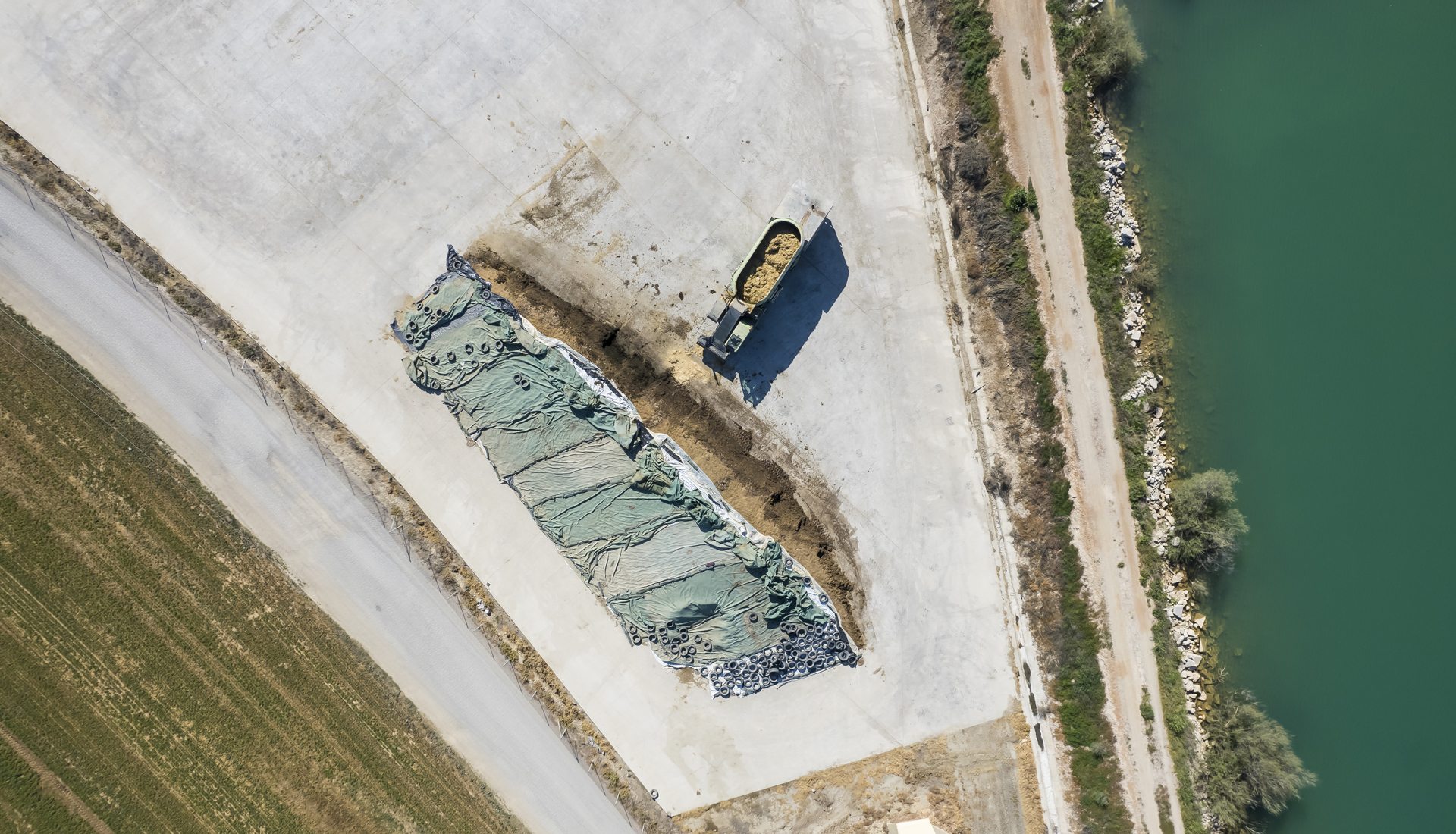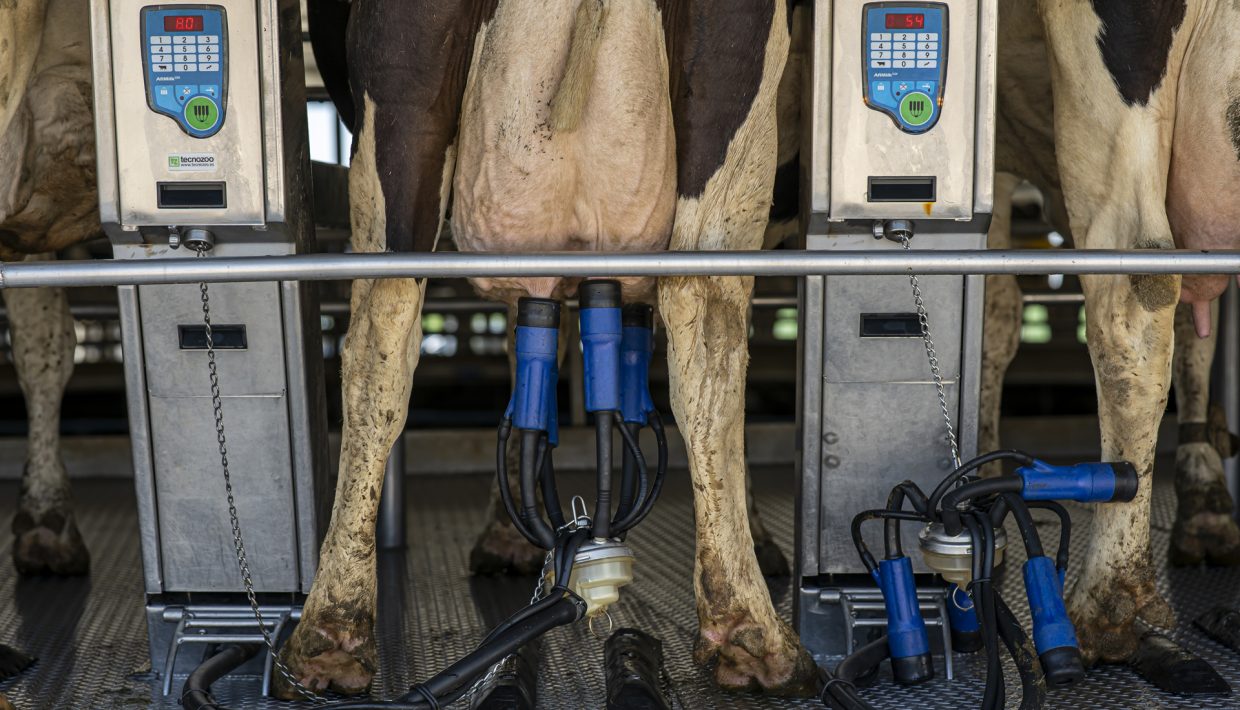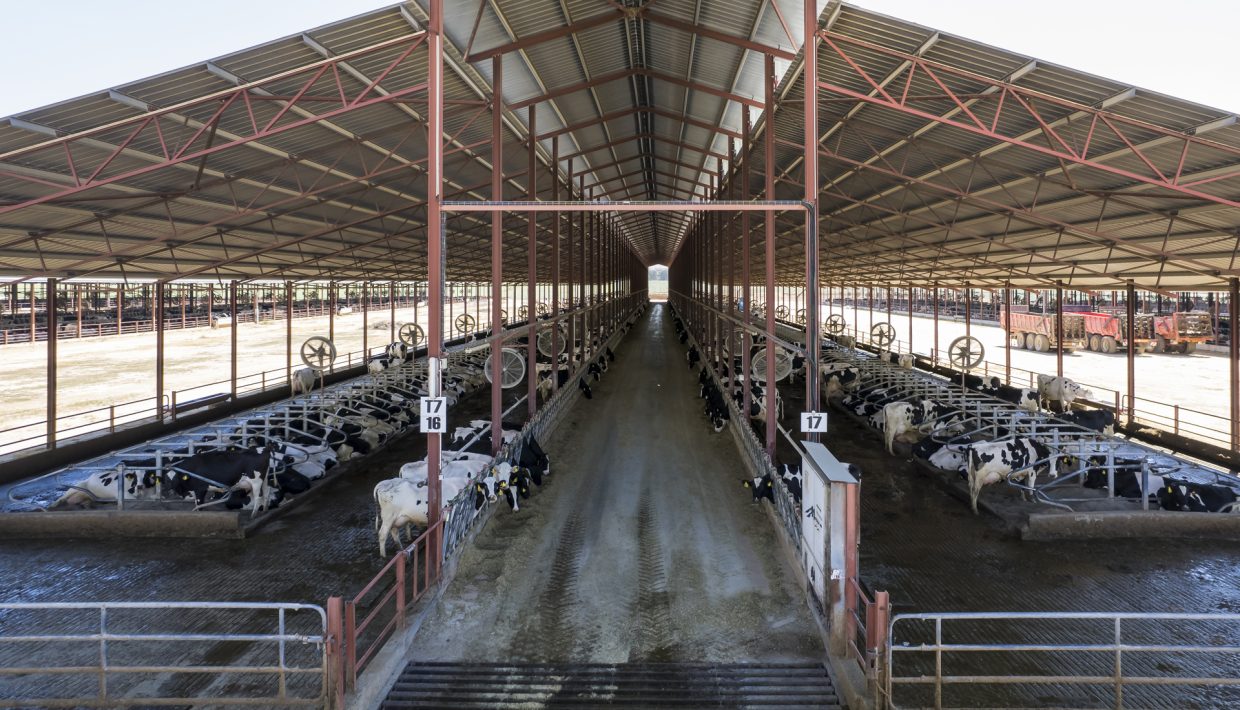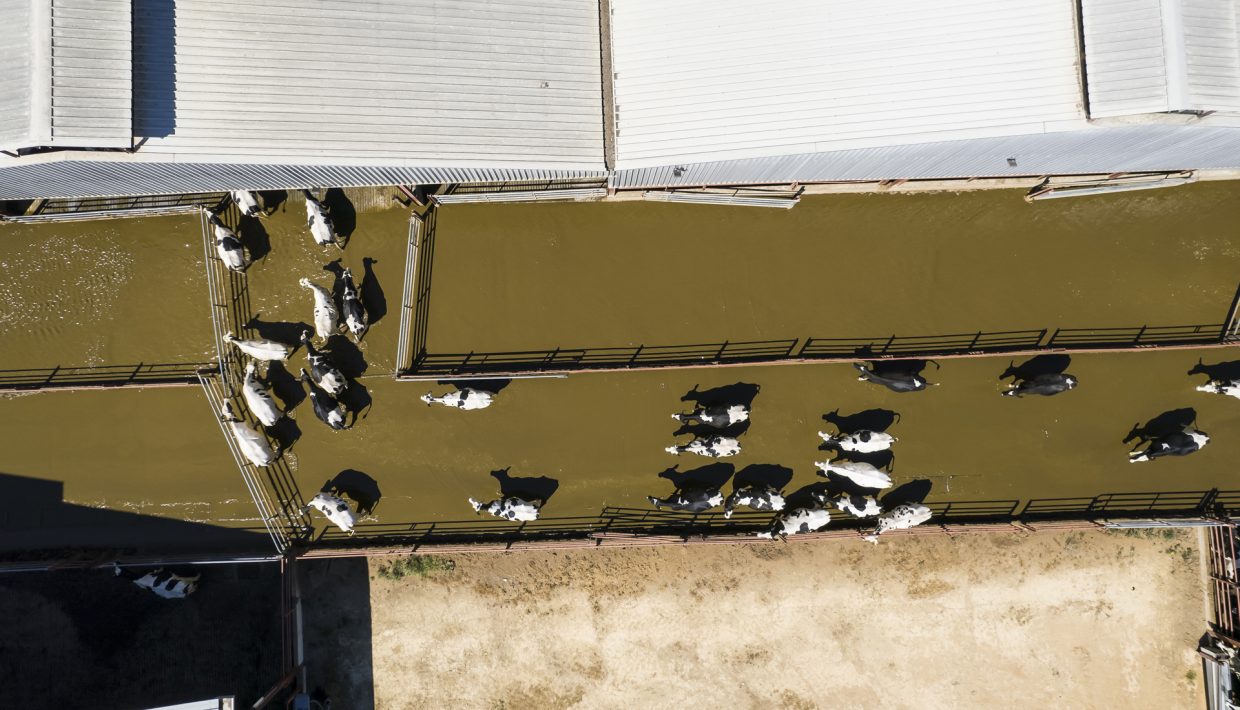Antonio Pont summarises the development of San José Farm in recent years briefly: “In 2010, we had 1,000 adult cows and now we milk over 4,000 a day”. Mr Pont is one of the San José Farm partners. He and his two nephews, Jaume and Jose María Pont, are the owners of this farm, which is one of the best examples of dairy cattle operations to be found in Spain.

The farm is in northern Spain, in the Huesca province, just over 100km from the border with France, in an area where conditions are perfect for forage production. Its dry climate allows forage to be harvested in optimal conditions, and at the same time farmers have access to water due to its proximity to the Pyrenees mountain range.
Mr Pont, Jaume and José María are passionate about what they do. “To be a good farmer, you have to enjoy your work,” Jaume says. “We really like our business. We could use the land for other crops, but we do this because we like it.” And they are not alone in this adventure: They have 88 employees, including 12 university graduates, and several external advisers.

Mr Pont is passionate about agricultural machinery and especially tractors. He has very good memories of when he had the opportunity to visit the John Deere factory in Mannheim, Germany. “We currently have 18 John Deere tractors, from 620HP to 60HP, including two we bought a long time ago that are still working.” Among the oldest models, they are particularly fond of “a John Deere 3130 from 1975, which has a really good output,” says Jaume.
For a while, we had tractors from another brand that were cheaper, but they didn’t work as well.
Antonio Pont
Among his tractors, he highlights the 9620RX with its rubber bands and 620HP (456 kW). This tractor is in operation 700 hours a year exclusively on soil preparation work. The family also have several from the 8000 series, including an 8400R, 400HP (294 kW) and three 8R310s, 341HP (251 kW), used with self-loading forage trailers. “We need a lot of speed, especially when tilling, sowing and processing forage: That’s why we buy high-powered tractors,” says Mr Pont.

Almost all the San José Farm’s tractors are green and yellow. “For a while, we had tractors from another brand. They were cheaper, but they didn’t work as well. Over time, we saw that they were actually more expensive for us, because we lost a lot of hours maintaining them and repairing them when they broke down, as they often did,” he adds. “And that doesn’t happen with the John Deere tractors. That’s why we only ever buy John Deere.”
The Success Story began 1951
It was a long time ago, in 1951, when Mr Pont’s family bought their first piece of land in this area with the intention of farming it. The first cows arrived 10 years later in 1961, and the milk was used only for the family and the farm workers.

The farm currently has 4,300 cows and another 2,250 animals, between replacement heifers and calves. All are Canadian Holstein Friesians. The herd is closed, has an annual replacement rate is 25%, with 100% served using artificial insemination.
“Due to biosecurity issues, we do not buy animals from outside the farm,” says Jaume. “With this, we have achieved a healthy farm that is free of tuberculosis, leukosis, brucellosis and pleuropneumonia.”
Livestock Feeding
Over 6,500 animals are fed with silage from the farm. “We are self-sufficient in cattle feed. We produce everything our cows eat on the farm,” says Jaume.
They cultivate a total of 1,250ha, including their own and rented plots, which they irrigate using pivot sprinkler irrigation. Each year, they ensile about 100,000t of forage from four annual cuts of ryegrass, eight cuts of alfalfa, and other crops like triticale, barley, maize and some vetch. “For us, it’s very important to have forages of the highest quality and in large quantities,” notes Jaume. “In winter, we grow triticale or barley and ryegrass. Once we harvest this crop, we plant maize. We use it all for silage. Then it’s very important that the silo is well compacted and left long enough.”

Crops
- 65 hectares of vetch and fallow
- 175ha of alfalfa for three years
- 260ha of triticale/barley and second maize crop
- 750ha of ryegrass and second maize crop
Milking
The farm milks 22 hours a day in an 80-point rotary parlour with 80 seats. The team are very happy with this system and at the moment are not considering replacing it with robots. “In the rotary system, the milking routine can be better controlled; it’s easier for the operator to adapt,” says Jaume. “The rotary system performs really well per litre and per hour.”.
“We produce over 60m litres of milk a year,” he adds. In order to achieve these figures, each cow is milked three times a day, reaching an average production of 46.1kg of milk per day, at 3.72% fat, 3.33% protein and a somatic cell count of 135,000.
Animal Welfare
“We want the animals to be in very good condition,” says Jaume. “Nobody is more interested in ensuring that our cows have maximum comfort than us. This is why we take maximum care of animal welfare, so that the cattle can reach their full productive potential.”
We want the animals to enjoy really good conditions.
Jaume Pont
Maximum attention to detail is given to facilities, biosecurity, cleaning, hygiene measures, ventilation, nutrition, milking, etc, always with the aim of optimising animal welfare. “We comply with all animal welfare regulations for cattle, and in some aspects we go further,” stresses Jaume. All breeding cows are housed on sand bedding cubicles, which are cleaned daily, with some of the sand replaced with recycled sand that has gone through a cleaning and drying system.
Key business factors
The dairy sector has its ups and downs. When there are is too much milk, the price plunges, and at other times the opposite happens and it rises. Jaume is clear about what the key business factors are: “To be competitive, it is essential to achieve high productivity with economies of scale, to be correctly integrated into the value chain, have a good financing system that enables us to withstand bad times, and also to have a competent team, identify what needs to be done and be enthusiastic about doing it.”
San José Farm in figures
- 4,300 Holstein cows
- 2,250 replacement heifers and calves
- 60m litres of milk per year
- 88 employees
- 80,000 m2 constructed area
- 18 John Deere tractors
- 3 irrigation reservoirs with a total of 750,000m3
- 1,250ha in sprinkle irrigation
- 42 irrigation pivots
- 800kW photovoltaic installation
- 3ha compost facilities
- 350,000m3 slurry lagoon






